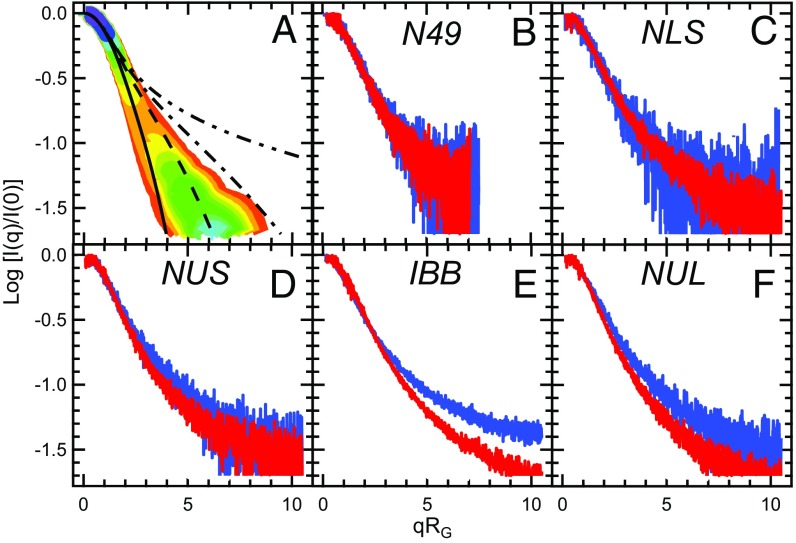Fig. 6.
The full SAXS profile (but not RG alone) is sensitive to the changes in the ensemble shape that occur upon IDP collapse. To remove the contribution of size to the SAXS profiles and visualize exclusively the influence of shape, size-independent SAXS curves are constructed by plotting the normalized scattering intensities (log[I(q)/I(0)]) as a function of q times RG. (A) Theoretical SAXS profiles predicted for different values of asphericities (δ*): 0.1 (solid line), 0.3 (dashed line), 0.5 (dashed-dotted line), and 0.9 (dashed dotted-dotted line) (see SI Appendix, Fig. S7 for more details on color scale). Note that asphericity increases from left (more spherical) to right (more anisometric) and that a given RG is compatible with many asphericities; i.e., RG is not sensitive to shape. The experimental SAXS profiles of unlabeled native (red lines) and unlabeled denatured (blue lines) IDPs are shown in B (N49), C (NLS), D (NUS), E (IBB), and F (NUL).

